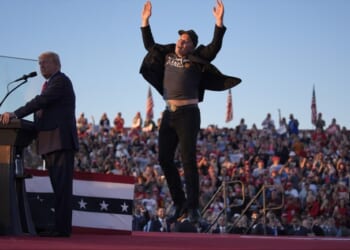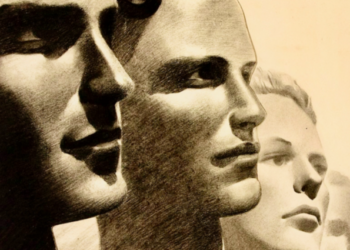A CERTAIN sight or sound can instantly transport you back to a long-ago, half-forgotten time and place of happy memories. For me, it happened a few weeks ago, triggered by the twang of a bowstring and the swish of an arrow flying through the air before thudding into a tree. Yes, almost 70 years after first seeing it, I was once again an enraptured child, sitting wide-eyed in front of the television and watching the opening sequence of The Adventures of Robin Hood.
The potboiler series, starring Richard Greene in the title role, was one of the first programmes seen on Britain’s new independent commercial channel ITV when it was launched in September 1955, and one of its greatest hits. As well as gaining millions of fans in Britain, it was a success throughout America and Europe.
ITV was initially broadcast in the London area and did not launch where we lived in the North of England until May 1956 – and that’s when I would have first seen The Adventures of Robin Hood, at the age of five and a half. Like all my pals, I was immediately hooked. I’m now watching it again on the Talking Pictures TV channel, although it is also widely available on YouTube.
A total of 143 half-hour episodes were filmed in four series and broadcast between 1955 and 1959. Interestingly for such a quintessentially English subject, The Adventures of Robin Hood was the brainchild of an American, Hannah Weinstein, head of the London-based production company Sapphire Films. She got Lew Grade – the British showbusiness mogul behind the ATV television franchise – to finance the project.
Weinstein, who had left-wing sympathies, had moved to Britain to escape the McCarthy communist witch-hunts of the 1950s, which led to many US scriptwriters being blacklisted. She recruited some of these unemployed wordsmiths to pen episodes of The Adventures of Robin Hood, using assumed names. Thus the tales they crafted of Saxons being persecuted by Normans had something of a personal piquancy for them.
The catchy song which accompanied the series, sung by Dick James, was also the work of an American, the celebrated lyricist Carl Sigman. It reached No 14 in the pop charts. Even now, the words are fresh in my mind . . . ‘Robin Hood, Robin Hood, riding through the glen / Robin Hood, Robin Hood, with his band of men / Feared by the bad, loved by the good, Robin Hood, Robin Hood, Robin Hood.’
Whatever political and social subtexts there may have been, for us children – and for many adults – The Adventures of Robin Hood was simple, straightforward entertainment, easy to follow and exciting to watch. Each episode was a self-contained story, but underlying the series was a timeless morality tale. It was set in the late 1190s, when King Richard the Lionheart was away fighting in France and his treacherous brother John was ruling a turbulent England in his absence.
Robin was Robin of Locksley, a Saxon nobleman who had returned from the Crusades only to be cheated out of his home and lands by a scheming Norman lord. Hunted and outlawed, he took refuge in Sherwood Forest, where he donned his trademark hood and with his band of merry men, righted wrongs and robbed the rich to give to the poor.
Robin was a kind and gentle soul but a formidable warrior, especially adept with the longbow. The outrageously good-looking Richard Greene, previously a cinema matinee idol, played him as a rather dapper chap, with a jaunty feather in his cap, clad in clinging tights, white blouse, and a neatly-pressed tunic of shimmering Lincoln green (TV was black-and-white back then, but we kids coloured it with our imaginations).
Regular characters included Robin’s aristocratic sweetheart Maid Marian Fitzwalter (Bernadette O’Farrell / Patricia Driscoll), his formidable but not very bright sidekick Little John (Archie Duncan), fellow outlaw Will Scarlett (Ronald Howard / Paul Eddington), the jovial and rotund Friar Tuck (Alexander Gauge) and the dastardly Sheriff of Nottingham (Alan Wheatley).
The scripts were intelligently written, often laced with humour and gentle irony. I think they also subtly imparted a message to us impressionable young boys, encouraging manly virtues – courage, honesty, steadfastness, chivalry. Storylines generally involved Robin thwarting the Sheriff, but often ranged far and wide. You can get some impression of this from the titles of various episodes – The Challenge, The Wager, The Ordeal, The Alchemist, The Oath, Errand of Mercy, The Deserted Castle, Secret Mission, The Infidel, Hue and Cry.
As for Maid Marian, she was a woman well ahead of her time, with a steely determination behind that serene exterior. I mean, how many fine ladies would date a condemned criminal who was living rough in the woods? However, as you would expect, she and Robin never seemed to get beyond the occasional chaste kiss.
Watching the series again, it struck me how almost all the actors spoke with what we kids regarded as ‘posh’ accents – impeccable Received Pronunciation. A few of the yokels and spear carriers affected a rural twang, but perfect English was the order of the day in the medieval greenwood. Thinking about it, having merry men speaking Brummie or Geordie would have been a step too far in the 1950s, triggering Establishment outrage and letters to the Times. Today, luckily for us, it means that – unlike the mumbling that mars a lot of modern TV dramas – you can easily follow the stories.
One of the bonuses of watching is spotting actors who later went on to greater things. The list is long, but includes name such as Donald Pleasence, Jane Asher, Sid James, Nicholas Parsons, Leo McKern, Joan Sims, Nigel Davenport and both Harry H Corbett and Wilfrid Brambell, later of Steptoe and Son. The British Film Institute website tells how there was frequent recasting (three Prince Johns) and character parts were filled by the same actors in almost weekly rotation – Paul Eddington played 20 parts before gaining the regular role of Will Scarlett.
The series was filmed mainly at Nettlefold Studios in Walton-on-Thames, Surrey, while woodland on nearby Wisley Common doubled for scenes in Sherwood Forest. Location shots of various English castles were also used. Today, to viewers dazzled by the splendid background scenery of Wolf Hall and the like, the interior sets of The Adventures of Robin Hood might seem slightly amateurish. But for me, they only add to the charm.
One jarring note in this indulgent nostalgia-fest is that some episodes on Talking Pictures TV carry a PG (Parental Guidance) warning before they are shown. God knows why – I mean, it did me no harm when I was five – but I suppose the channel has to comply with today’s Nanny State regulations. All I can say is that back in the 1950s, the only parental guidance we would have got was: ‘Go and watch The Adventures of Robin Hood – you’ll love it.’ And we did.










